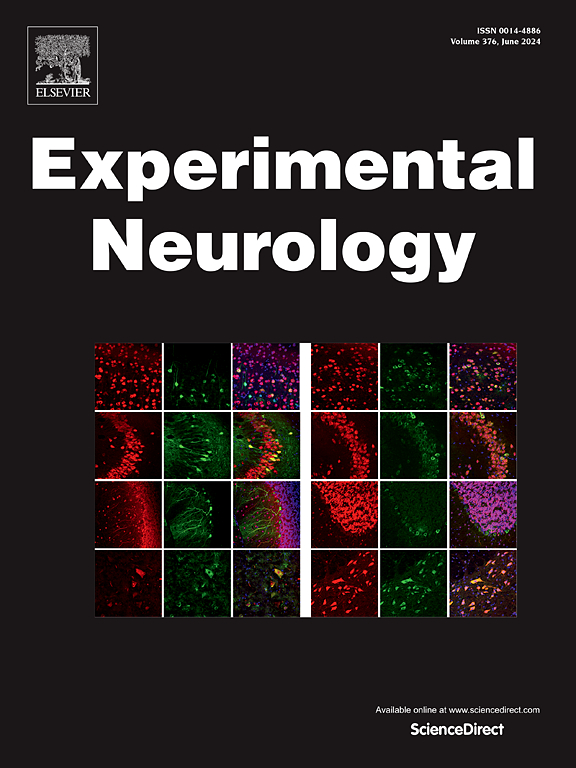Tg-SwDI transgenic mice: A suitable model for Alzheimer's disease and cerebral amyloid angiopathy basic research and preclinical studies
IF 4.6
2区 医学
Q1 NEUROSCIENCES
引用次数: 0
Abstract
Alzheimer's disease (AD) is the most common neurodegenerative disease and the most frequent cause of dementia. Characteristic features observed in the brain of AD patients are the accumulation of amyloid beta peptide (Aβ) aggregates, neurofibrillary tangles (NFT) composed of hyperphosphorylated Tau protein, neuronal and synaptic loss, and elevated levels of oxidative stress and inflammatory markers. Cerebral amyloid angiopathy (CAA) is another common cause of cognitive decline characterized by the accumulation of Aβ in the cerebral vasculature. The precise overlapping pathogenic mechanisms underlying the co-occurrence of AD and CAA are not very well understood. However, vascular dysfunction observed at early stages is considered a key phenomenon. Tg-SwDI transgenic mice expressing human Aβ precursor protein (AβPP) harboring the Swedish K670N/M671L and vasculotropic Dutch/Iowa E693Q/D694N mutations in the brain have been extensively used to study many pathological features observed in AD/CAA patients and to design biomarkers and therapeutic strategies. The present review summarizes studies addressing different features mimicking human disease in Tg-SwDI mice: parenchymal and cerebral vascular amyloid accumulation, neuroinflammation, complement overactivation, cerebrovascular, mitochondrial and GABAergic system dysfunction, altered NO synthesis, circadian rhythm disruptions, lead exposure effect, among others. Also, reports that evaluated anti-Aβ and anti-inflammatory strategies and compounds capable of delaying or reversing vascular dysfunction and the impairment of GABAergic transmission in Tg-SwDI mice are analyzed. This review may help researchers determine this model's appropriateness for future studies of a particular mechanism or a novel treatment protocol.
求助全文
约1分钟内获得全文
求助全文
来源期刊

Experimental Neurology
医学-神经科学
CiteScore
10.10
自引率
3.80%
发文量
258
审稿时长
42 days
期刊介绍:
Experimental Neurology, a Journal of Neuroscience Research, publishes original research in neuroscience with a particular emphasis on novel findings in neural development, regeneration, plasticity and transplantation. The journal has focused on research concerning basic mechanisms underlying neurological disorders.
 求助内容:
求助内容: 应助结果提醒方式:
应助结果提醒方式:


